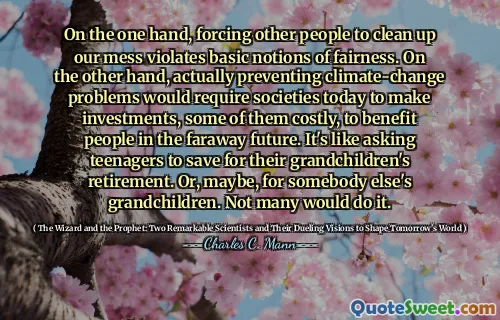many of the racial alarmists were also leaders in the nation's new conservation movement. The blue-blooded toffs who feared that the noble and superior white race was menaced by unwashed rabble also saw wild landscapes as noble and superior wildernesses menaced by the same rabble. Prizing the expert governance of resources, they found little difference between protecting forests and cleaning up the human gene pool.
📖 Charles C. Mann
In "The Wizard and the Prophet," Charles C. Mann highlights a troubling connection between racial alarmism and the early conservation movement in America. Many leaders in conservation, who viewed themselves as protectors of the superior white race, also perceived natural landscapes in a similar elitist framework. They regarded both human and environmental threats as issues needing control, seeing the preservation of wilderness as akin to the purification of human society.
This perspective reveals a deep-seated belief in hierarchy and superiority, where the elite sought to safeguard not only the environment but also the perceived purity of the human gene pool. The intertwining of these ideologies underscores how notions of racial superiority were reflected in the attitudes towards nature, suggesting that protecting wild landscapes and curbing societal elements deemed undesirable were part of the same conservation ethos.







